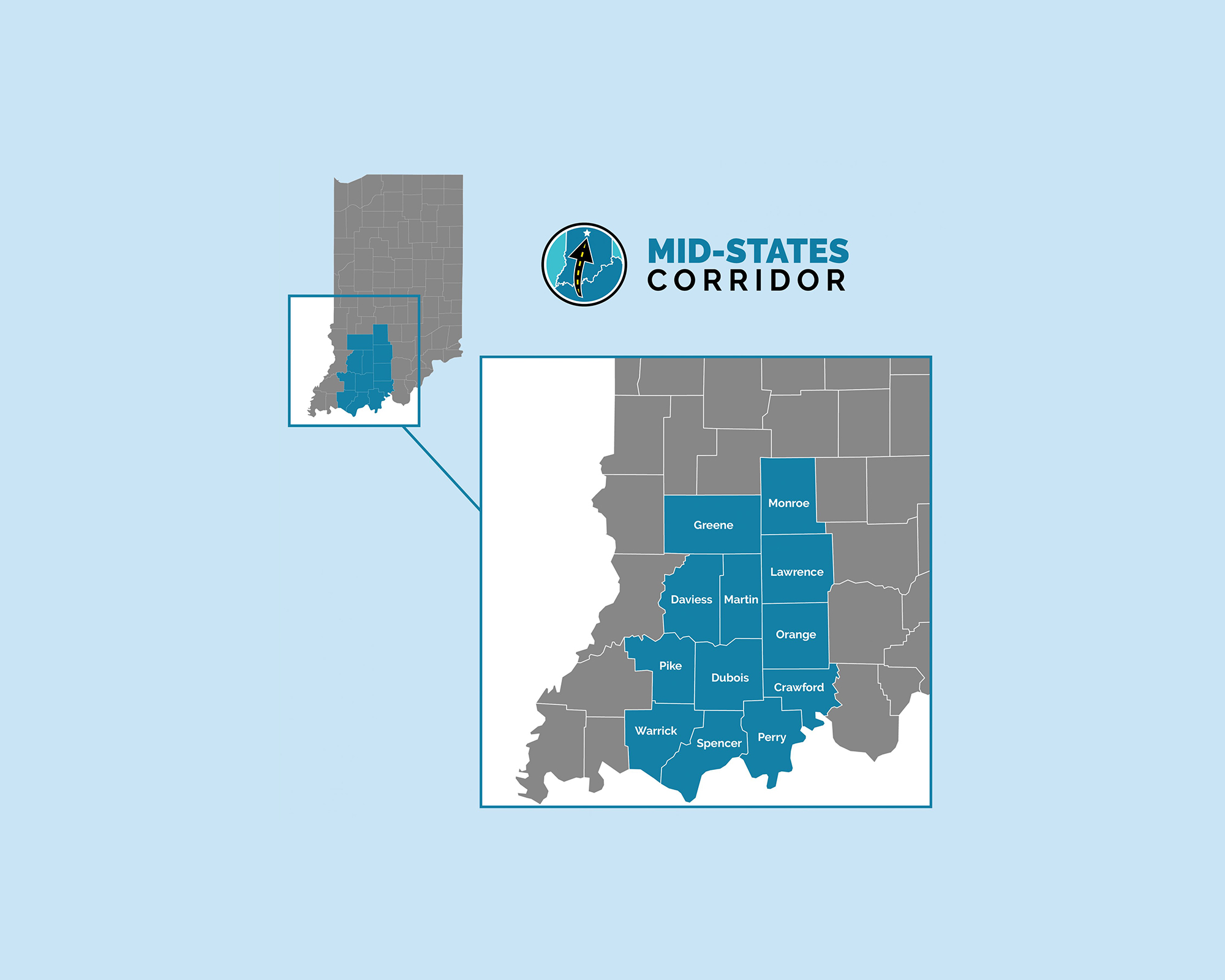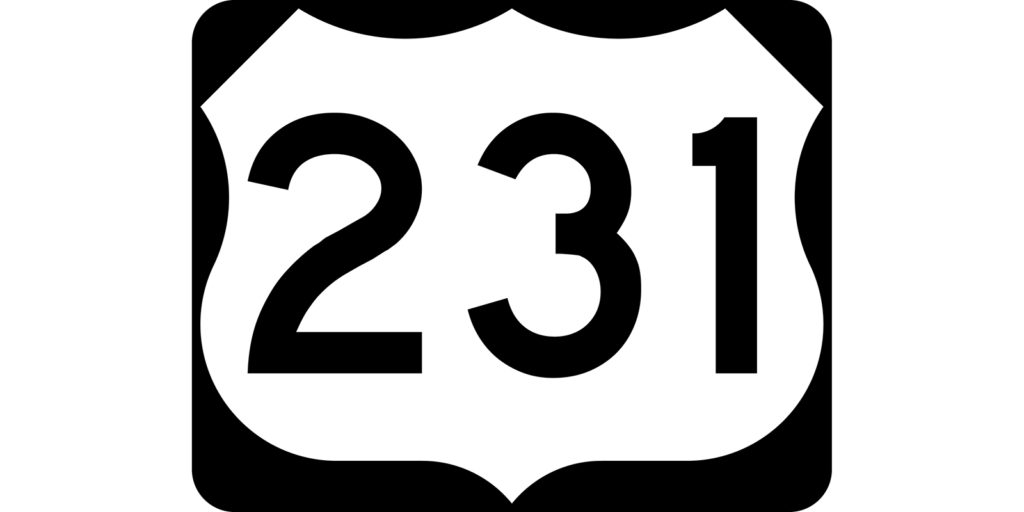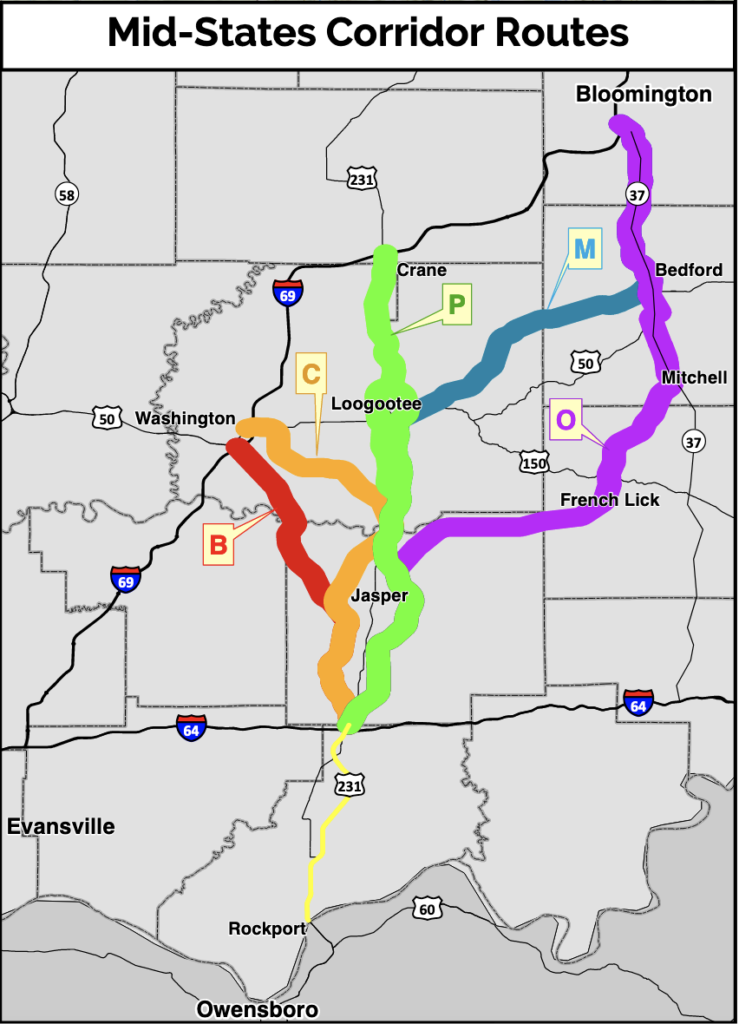By Miles Flynn | Southern Indiana Business Report
JASPER — Gov. Eric Holcomb’s June 11 announcement that U.S. 231 in southwest Indiana is slated to see $75 million in improvements set off a flurry of questions in the region. Fueling speculation is the road’s status as one of the pathways still under consideration as a route for the Mid-States Corridor Project to provide communities with a better link to I-64 and I-69.
Theories have run the gamut from the planned improvements making the Mid-States Corridor unnecessary — or being a reason to shift its route to one of the other alternatives — to the announcement being a sort of backdoor green light for the Mid-States Corridor Project itself.
Officials with the Mid-States Corridor Project and the Indiana Department of Transportation insist the two projects are not related.
“These are separate projects, with the U.S. 231 improvements focused on localized needs,” Mindy Peterson, spokesperson for the Mid-States Corridor Project, told Southern Indiana Business Report. “The Mid-States Corridor Project is a regional project with potential far-reaching impacts.”
U.S. 231 improvements
In his June 11 announcement, Holcomb noted the U.S. 231 work will include added travel lanes, passing lanes and intersection improvements at strategic locations. The goal is to reduce congestion in the Jasper and Huntingburg areas and improve safety and mobility throughout the approximately 48-mile corridor from I-64 near Dale to I-69 near Crane.
“In general, we’re looking at spot improvements from Spencer County to Martin County – this could potentially include added travel lanes in certain locations, intersection improvements, or other unspecified improvements,” Jason Tiller, district communications director with INDOT in Vincennes, related. “We’re still in the planning stages for this project, so there isn’t a lot of specific information at this point.”
While Holcomb’s announcement indicates “roadwork will begin as soon as 2022” and “construction is anticipated to begin by late 2022,” the actual picture of what will happen, and when, isn’t quite that specific yet.
“Typically, it takes three to five years to plan a normal project. At this point, we don’t have a defined timeline for these specific projects,” Tiller explained.
He noted that once the agency begins to determine recommended work for the locations identified in this project, residents will be kept up to date through early coordination letters, public hearings, INDOT’s website, press releases, and other means.
“Unfortunately, until planning stages are complete, there’s really no reliable way to pinpoint when these improvements will begin or end,” Tiller concluded. “But as I said earlier, it typically takes three to five years to get a project from paper to pavement. Based on that, I would look for construction to begin in the next three to five years.”
Mid-States Corridor update
In February, the Mid-States Corridor team announced that the preferred route for the project is expected to be revealed this fall as part of a draft environmental impact statement (DEIS). Peterson confirmed the timeline is still the plan at this point.
“The improvements planned for U.S. 231 are not expected to affect the DEIS and identification of a preferred corridor this fall,” Peterson said. “As more details are determined and improvements move forward for the U.S. 231 corridor, there will be appropriate coordination.”
Reviewing the routes still under consideration, beginning at I-64, just north of Dale:
- Route B would proceed north, pass to the west of Huntingburg and Jasper, then east of Otwell and Dogwood Lake, to link with I-69 south of Washington.
- Route C would follow the same route outlined above until breaking off near State Road 56 and swinging to the north of Jasper. It would then turn westward, passing through the Alfordsville area and north of Dogwood Lake, to connect with I-69 east of Washington.
- Route P would roughly follow U.S. 231 north from I-64, pass just east of Huntingburg and Jasper, then pass either to the west or east of Loogootee, before proceeding north to join I-69 near Crane.
- Route M would follow the same path described above until reaching Loogootee. At that point, the highway would turn northeast, roughly following State Road 450 through northeast Martin County and western Lawrence County, to meet up with State Road 37 just northwest of Bedford.
- Finally, Route O would follow the same paths outlined above until passing by Jasper. The road would then turn east, roughly following U.S. 150/State Road 56 to a point just south of French Lick. It would then turn north, passing the east side of French Lick and West Baden Springs, before continuing northeast to join S.R. 37 at Mitchell.
“A preferred corridor will be identified after comparing benefits, impacts and costs of detailed alternatives,” Peterson noted.
Also helping make the decision will be input the Mid-States Corridor team received at its public meetings held prior to the COVID-19 pandemic, through www.MidStatesCorridor.com, by email at info@midstatescorridor.com, by phone at 812-482-3116, and by mail or in person at its office. The office is now open again on Mondays, Wednesdays and Fridays from 8 a.m.-5 p.m. in its new location: CTIM Room 202, 850 College Avenue, Jasper, IN 47546. Peterson stressed feedback can always be shared electronically, by mail or at the office.
“Feedback has been diverse and has included general support or opposition to the project, concerns about potential impacts on property and environmental impacts, and general information about natural resources and other items of note in the project area,” Peterson said.
The preferred corridor identified this fall is still expected to be 2,000 feet wide. Narrowing down the road’s proposed path further will require more study, consideration of impacts, and review of public comments received after the announcement.
“We expect to hold two public hearings after the DEIS is published,” Peterson said. “We also anticipate a virtual component to support the hearings. Comments will be received during the hearings and there will be a formal comment period of at least 30 days.”
That next step — the tier 1 final environmental impact statement and record of decision from the Federal Highway Administration — is expected to come next summer. However, the timeline for what may happen after summer 2022 is not nearly as clear.
“If a build alternative is selected, more detailed tier 2 studies will follow to study more detailed impacts and specific alignments,” Peterson said. “There’s no timetable for those studies.”





